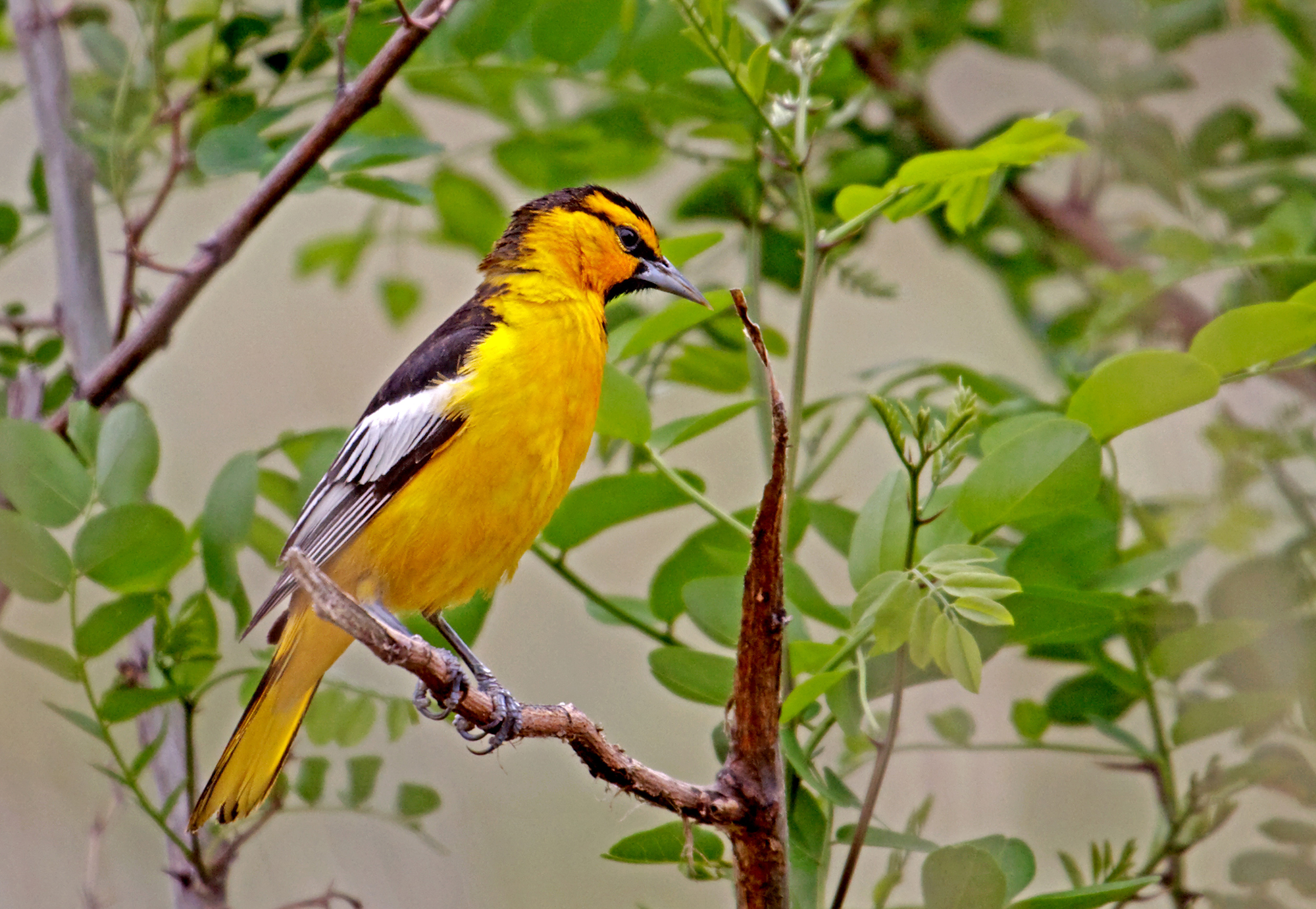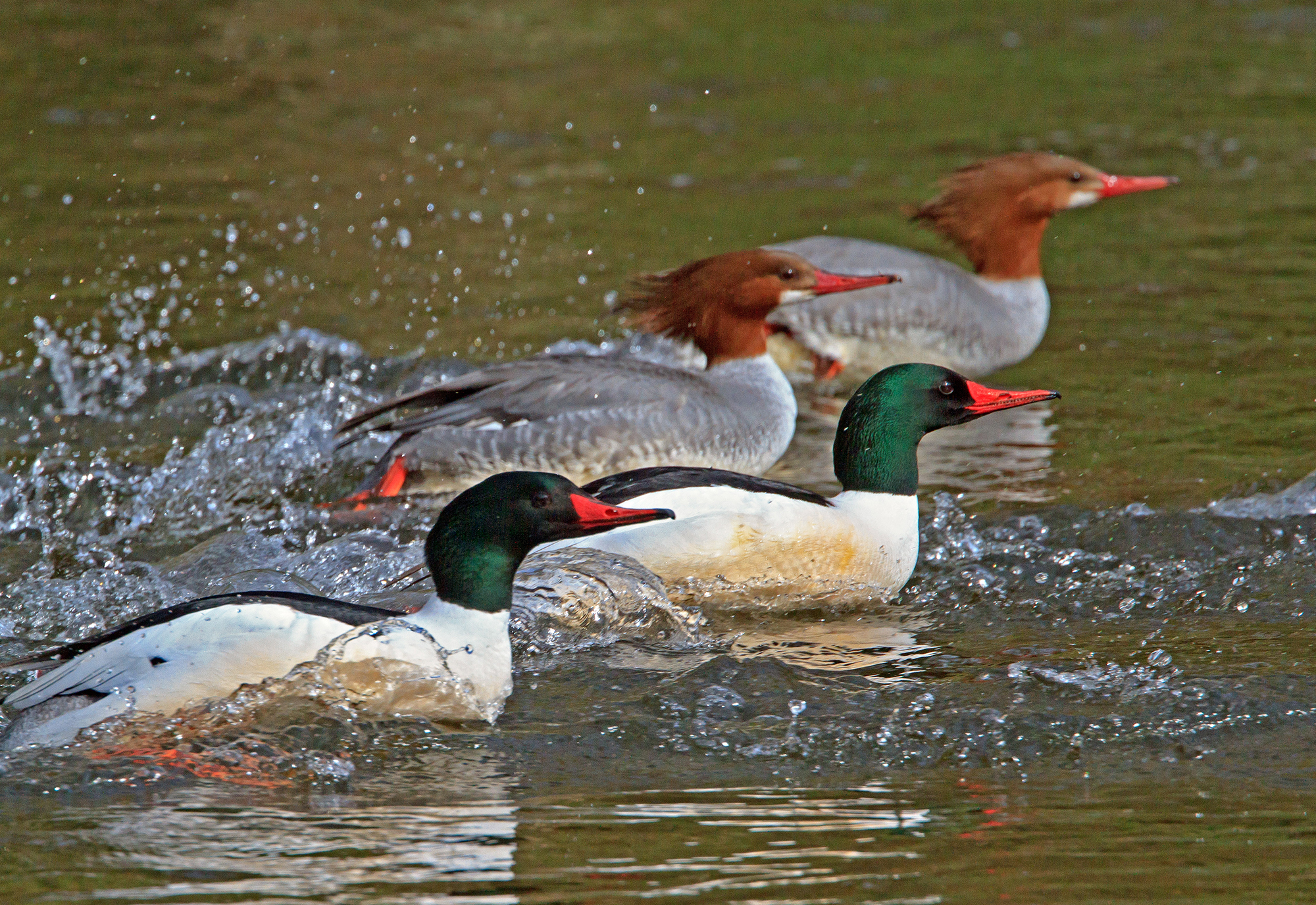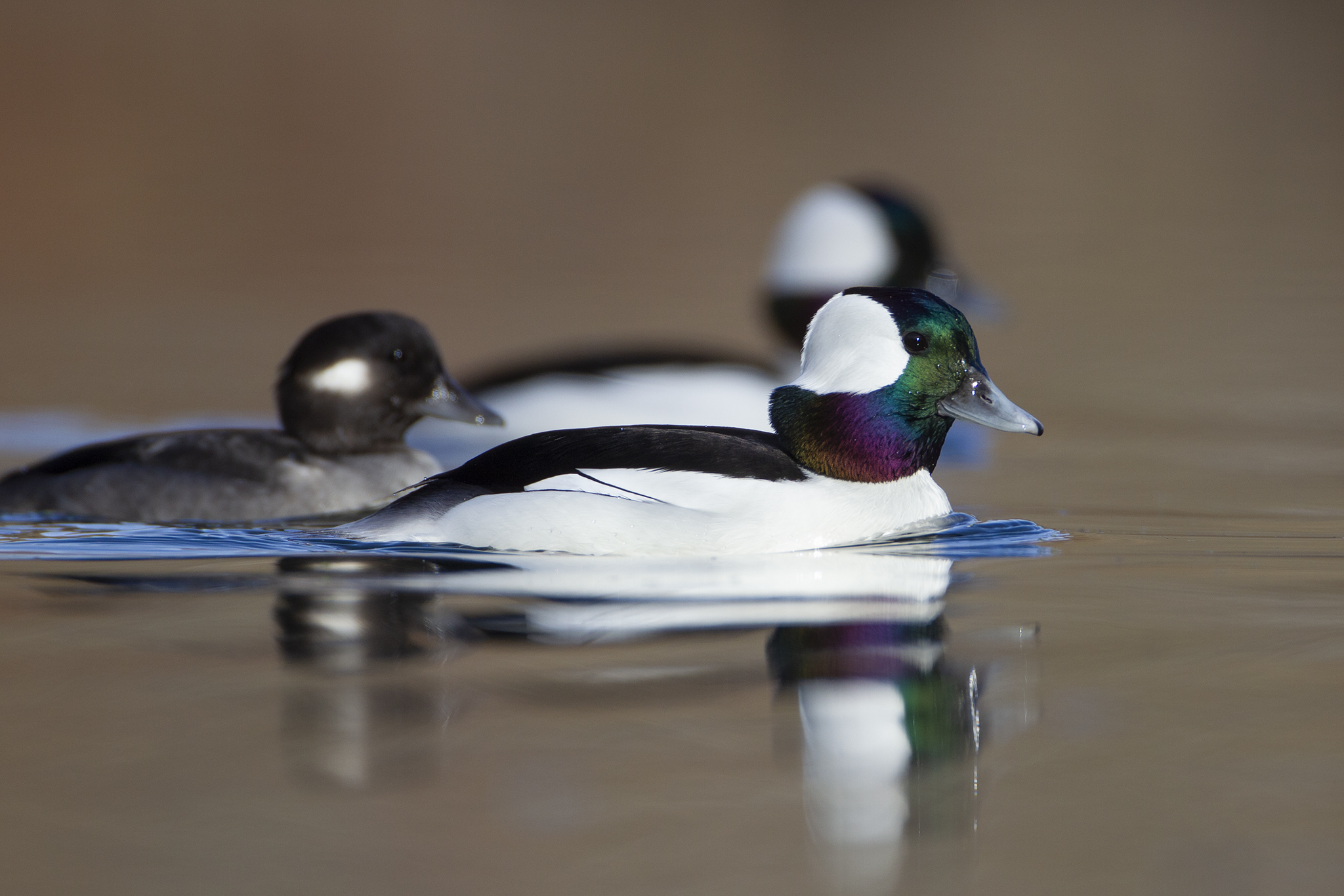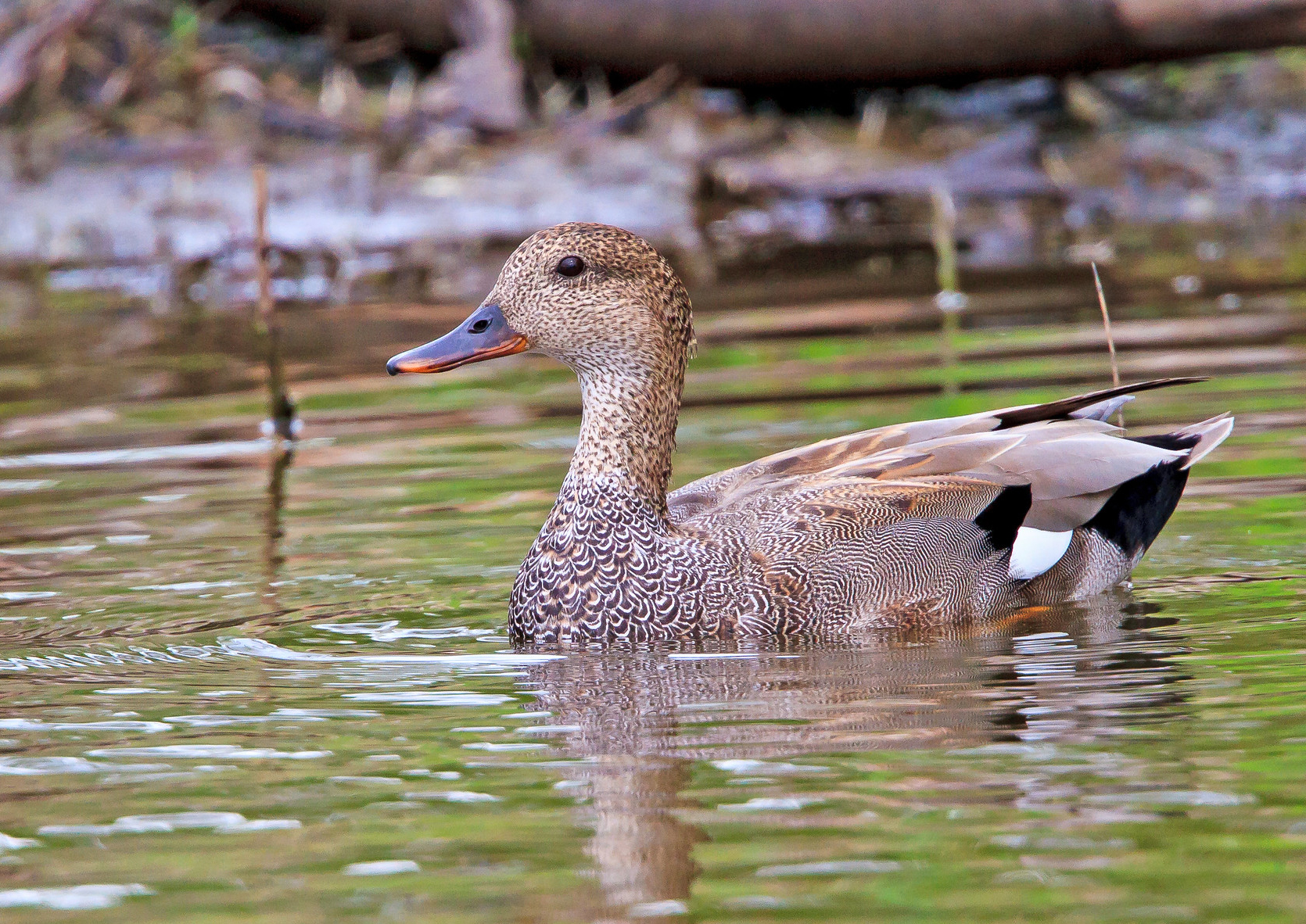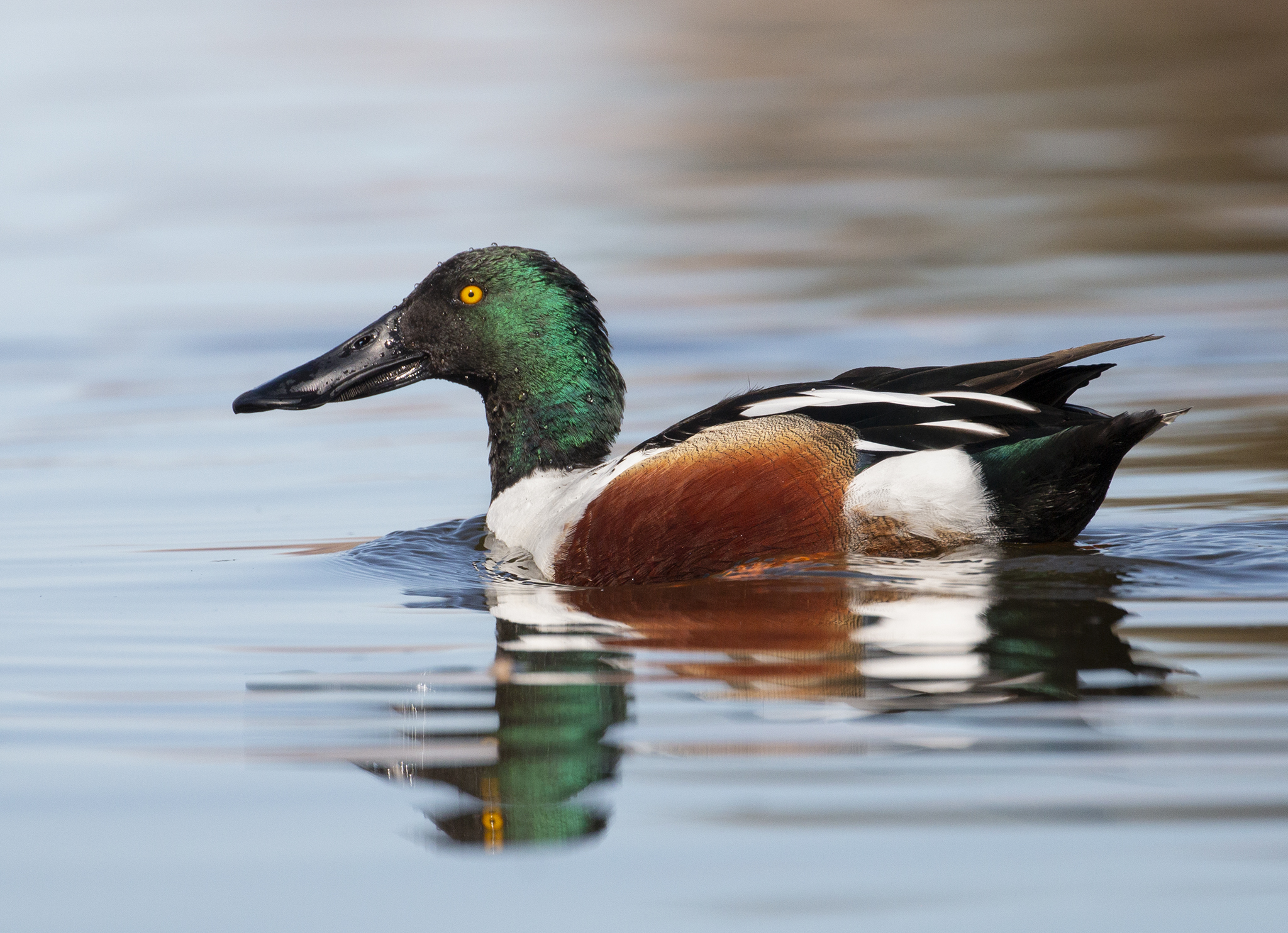Written by Peter Pearsall/Photo by Dan Streiffert
A boldly colored member of the New World blackbird family, the Bullock’s oriole is a thrill to behold as it hops among branches of cottonwoods and other deciduous trees and shrubs, often not far from water, gleaning insects and other invertebrate prey.
This species, named after the amateur English naturalist William Bullock, is common across western North America in summer, where it builds its characteristic hanging nest in riparian trees and shrubs. The nest is constructed of plant fibers, hairs, fine grass, and moss, usually at the end of a branch.
The Bullock’s oriole is one of more than 30 New World oriole species in the genus Icterus, the majority of which occur further south in Central and South America. Few than ten of these species breed in North America; the Bullock’s oriole nests further north and west than the other Western species.
For a time, the similar-looking Bullock’s oriole and Baltimore oriole were considered the same species, owing to their tendency to hybridize where their ranges overlap in the western Great Plains. Recent studies of the orioles’ mitochondrial DNA revealed that the birds are only distantly related, sharing more genetic similarities to other Icterus species than with one another.
At Malheur Refuge, look for flashes of yellow and orange in cottonwood trees or willows along the Blitzen River, or in deciduous trees at Page Springs and Refuge Headquarters. Also listen for the male’s song, which is composed of rich whistled notes interspersed with rattles and gruff scratchy notes.

